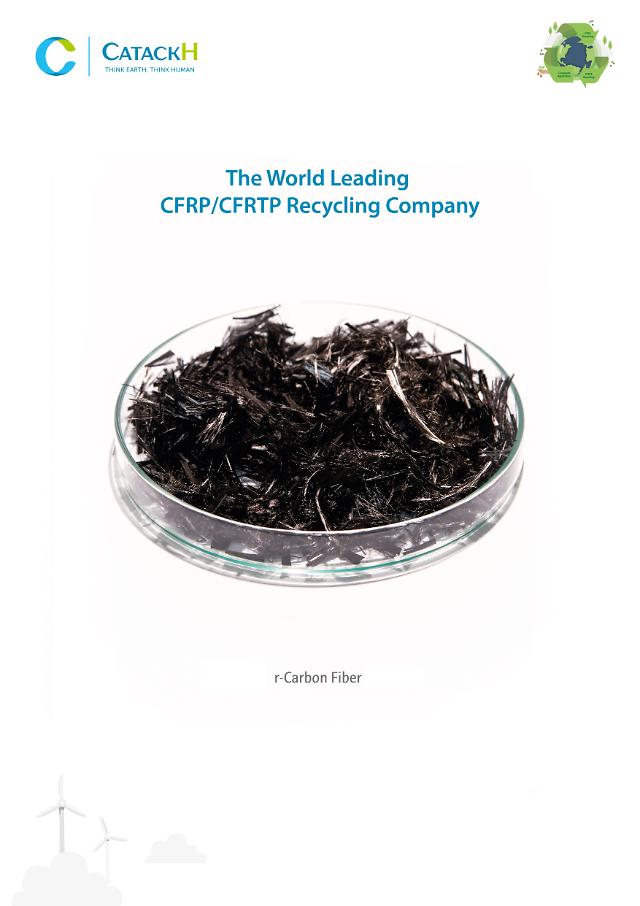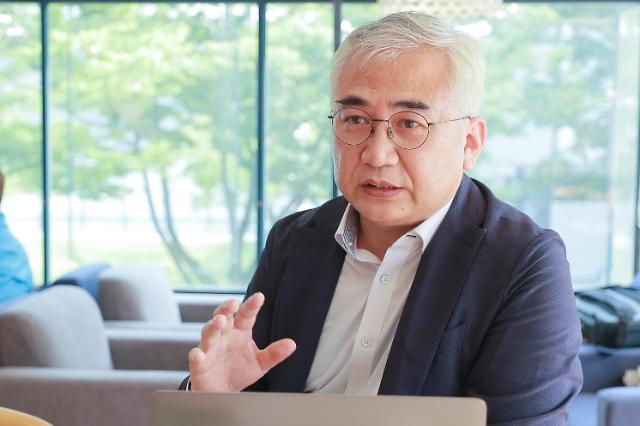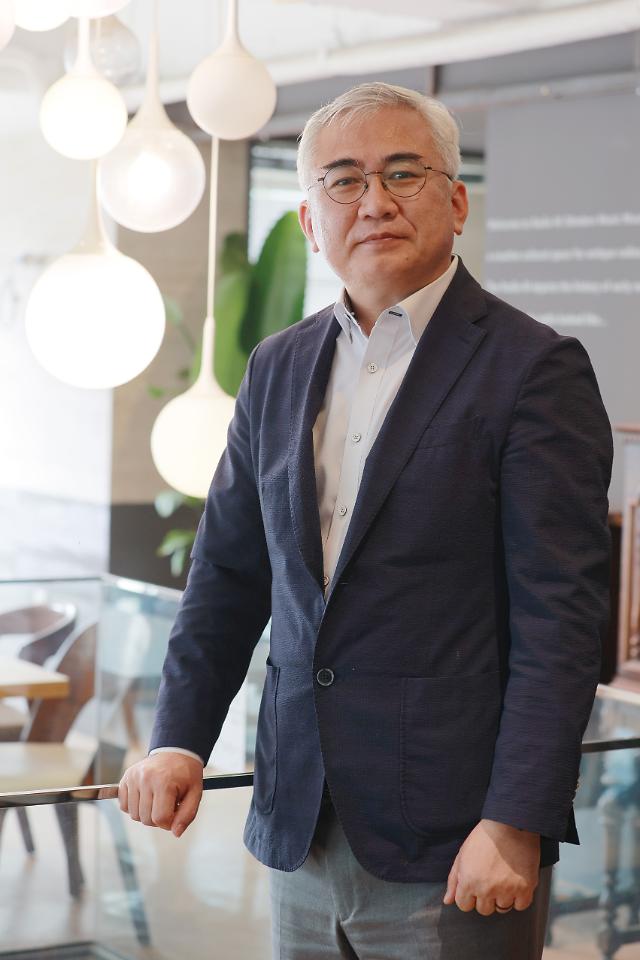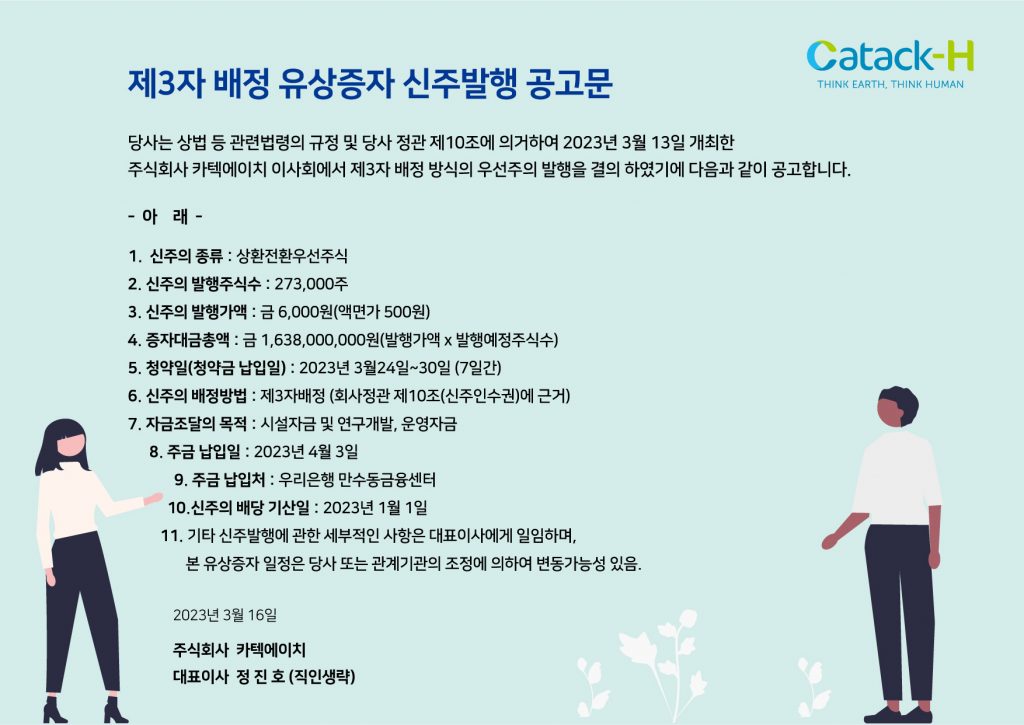Looking for shoe materials, I opened my eyes to eco-friendliness… I started a business that way
Headache in the non-rotten ‘dream fiber’ CFRP treatment
Recover more than R-CF 95 with eco-friendly and low-cost technology
Love calls from overseas such as Solvay and Mitsubishi Chemical
Building a factory in Jangsu to meet global demand
There is a company that domestic and foreign companies, such as Hyundai Motor Company and Solvay, are paying attention to. Cartech H, a company specializing in recycling carbon fiber reinforced plastics (CFRP), has an unrivaled technology. CFRP is a key material for future business transformation of major companies, and its recycling technology is considered a key to ESG management.
Jeong Jin-ho, president of Catech H, who met with a reporter at a cafe in Seoul on the 9th, said, “Inquiries from companies in each country for technological cooperation are flooding in.” It is because whether or not it is possible has become the main topic,” he said excitedly. On this day, he was also in a situation where he split his busy time after meeting with a company requesting collaboration to answer an interview.

Regenerated carbon fiber (r-CF) produced by Catech H with its own technology. [Photo = Provided by Catech H]
The problem is that recycling of CFRP is not easy. Some companies do not find a way to incinerate or landfill, but they are suffering from harmful gases and do not rot. Governments around the world are also struggling with how to deal with waste CFRP along with regulations. This is the background in which President Jung jumped into the wasteland with expectations for the CFRP recycling business.
CFRP is an ultra-high-strength fiber that weighs only one-fourth of iron and has more than 10 times the strength of iron. As of last year, the global CFRP market reached 180,000 tons, or about 42 trillion won.
“Last year, the regenerated carbon fiber (r-CF) market is estimated at 3 to 4 trillion won, about 1/10 of the CFRP market,” said President Jung. We have the technology to produce high-quality, environmentally friendly r-CF.”
In fact, Cartech H’s r-CF production technology is so high that it is evaluated that there is no competitor in the global market. Established in 2017, Katech H has developed an eco-friendly recycling technology that recovers more than 95% of r-CF from waste CFRP in a low-temperature environment of 100°C or lower and atmospheric pressure, using a chemical method that adds inexpensive additives to water.
Existing thermal incineration methods mainly use thermal incineration, which burns at high temperatures of 600 ° C or higher, causing environmental pollution and high cost. In the case of Korea, even this cannot be done, so virtually all CFRP from the manufacturing process has been incinerated or landfilled.
Catech H’s r-CF production technology is also superior in price competitiveness. It is about 1/10 the cost of treating the same amount with the existing thermal incineration method.
“We received r-CF production technology from the Korea Institute of Science and Technology (KIST) in 2017, and over the past four years, we have improved the technology and developed a mass production process,” said President Jung. I am going,” he said.
In 2019, Catech H built a continuous process line with a capacity of 200 to 300 tons per year at its Hwaseong plant. Last year, as investment continued in Corona 19, it was possible to add a batch processing line with an annual capacity of 1,500 tons.
President Jeong said, “We will secure the world’s largest waste CFRP processing capacity of 6,000 tons per year by 2024 at the earliest to meet domestic and foreign demand. To this end, we are preparing to establish a large-scale r-CF production plant in Jangsu, Jeonbuk.” said.

Jeong Jin-ho, CEO of Cartech H. [Photo = Reporter Yoo Dae-gil]
The following is a Q&A with President Jung, who dreams of becoming the world’s best r-CF producer.
-The reason for entering the barren r-CF market
“It can be said that it was luck to come into contact with r-CF. In 2016, I found out about r-CF while looking for a carbon fiber material to be applied to shoe production. We expected that CFRP post-use treatment and r-CF production would emerge as the core of eco-friendly management in the global market, and we invested everything without a doubt.”
– The reason why we were able to be confident in our technological competitiveness
“The r-CF production technology transferred from KIST is a chemical process that is eco-friendly and incomparably more economical than the existing thermal incineration method. Even if we simply consider the recovery rate of raw materials, the thermal incineration method is less than 80%, but our ‘s technology boasts about 90% or more r-CF quality compared to fibres, and maintains more than 95% of the physical properties, so many companies covet the technology as it is practically no different.”
-How did you raise the money?
“As it has unrivaled technology, it was relatively easy to attract investment. It is still in progress to the extent that Knet Investment Partners additionally invested 3 billion won last May. Most of the project costs are covered by investment. Currently, KIST and Ilshin Chemical Industries are participating as major shareholders.”
– It is said that domestic and foreign companies are courting.
“Basically, our business is divided into two: recycling of CFRP and production of r-CF. In terms of recycling, Hyundai Motor’s hydrogen fuel storage tank and Korea Aerospace Industries (KAI)’s Surion helicopter are currently used in the manufacturing process. CFRP crumbs (scrap) are being recycled In addition, considerable discussions were held with not only domestic companies such as Lotte Chemical, Korean Air, Hanwha Q Cells, and Ilshin Chemical Industries, but also overseas companies such as Solvay, Mitsubishi Chemical, and Carbon Revolution. Companies are considering establishing corporations and factories in the United States, China, Europe, and Australia upon request.”
-The purpose of the Jangsu factory is
“It is a next-generation plant following the Hwaseong plant. It is planned to be built as an eco-friendly smart factory, and the production scale will be prepared in preparation for the growth of the global market over the next 10 years. It is designed to produce even the applied products of r-CF that global companies are requesting. .When completed, Catech H’s waste CFRP processing capacity will be 6,000 tons in addition to the existing Hwaseong plant’s 1,500 tons. It is the world’s largest scale. Through this, we will become a leader in the growing market with eco-friendly and low-cost strengths as weapons.”
-Sales target
“Assuming that the current Hwaseong plant is fully operational, annual sales of 15 billion won can be captured just by CFRP treatment. If incidental income is taken into account, it is expected to greatly exceed this figure. When cooperation with companies starts in earnest and sales start to come from the longevity factory, it is expected that the company will be able to achieve a quantum jump in performance. I am confident that the global market will be able to quickly realize it while emphasizing ESG.

Jeong Jin-ho, CEO of Cartech H. [Photo = Reporter Yoo Dae-gil]
©’Global Economy Newspaper in 5 languages’ Ajou Economy. Unauthorized reproduction and redistribution prohibited
Reporter Yoo Jin-hee: 2021-07-15 06:00

